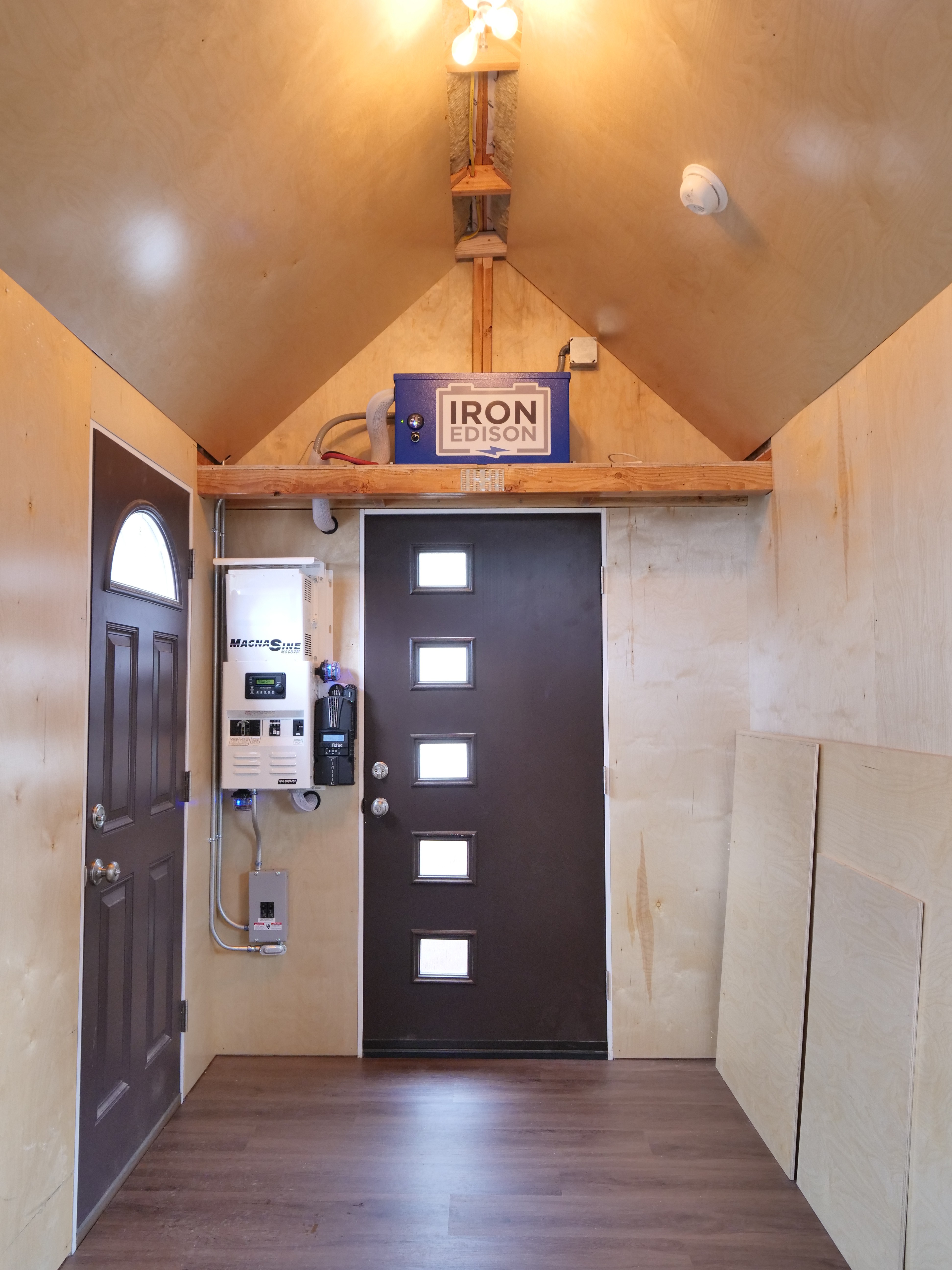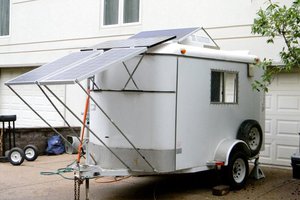* Days Powered Without Sun: 1 Day @ Max Load | 5 Days @ Min Load
* Typical Recharge Time From Empty to Full: 3 Days of Full Sun
* 24 Foot Trailer * Sleeping Loft * About 248 Square Feet Total
* 7 X 410 Watt Solar Panels | 2872 Max Watts Total
* Can Produce 545 Watts even on a cloudy day
* 44kWh Battery Rack @ 48 Volts
* Max Continuous Load : 15kW @ 120VAC
* Average Hours of Sun Per Day Required for Max Load: 4.6 hours
* RV Water Connection and 8 Gal Point-of-Use Water Heater
* Inductive Stove Top with Range Hood and 4-in-1 microwave/oven
* 32" Shower and Choice of Toilet Style
* Generator/Grid Tie Input: Standard 50 Amp Connection
* Power Output: Standard 50 Amp Socket
Design challenges include supply chain issues, certifications, scaling up production, and cost of materials due to inflation. Plans for deployment include setting up a tiny home factory and maintaining quality control standards.
Interestingly, this value 80kWh per week (4.16MWh per year) for a person living in this tiny home seems to match what a typical person consumes from their existing power company and you can check your electric bill to see if your weekly power consumption is the same. Simply take the average monthly electric consumption and divide it by 4 weeks then divide by the number of adults living in the household. This is very close to the average per capita electricity consumption in the UK: https://www.statista.com/statistics/383633/worldwide-consumption-of-electricity-by-country/
This is a conservative estimate since this does not account for multiple occupants in the tiny home, time away from home, the newer generation of solar power equipment, or other renewable sources of power like farm animals, passive geothermal, and biogas, which significantly increases energy efficiency in the future.
Assuming the toilet is connected to a sewage, septic, or composting system, the top five most power consuming appliances are the water heater, space heater/air conditioner, the solar inverter itself, refrigerator, and a hair dryer.
Since the water heater consumes more than double the energy of the second most power hungry appliance, the water heater is the target of the most energy efficient design possible using the latest technology available. The final water heater design utilizes the smallest 8-gallon water heater tank with the highest operating temperature of 161 F then installing a thermostatic valve on the outlet, which automatically mixes with cold water to bring the temperature down to a safe 120 F. A smaller hot water tank at a higher temperature is much easier to store, insulate, and heat up with a smaller heating element over a longer period of time than a larger tank at a lower temperature. Combined with a lower flow shower head of less than 2GPM, a maximum shower time of 13 minutes can be achieved with only 8 gallons of hot water. This is a good online hot water mixing flow calculator: https://www.spiraxsarco.com/resources-and-design-tools/calculators/water-mixing/water-mixing
It is also interesting to note that the size of the battery required for 100% solar off-grid is about the same size as an electric vehicle battery. The difference is that the house battery can provide energy for cooking, showers, heating, air conditioning, lighting, working from home, food storage, washing clothes, entertainment, and powering electronics while the car battery energy is mostly used for pushing a 2,000 pound piece of metal on wheels around town. In comparison, a full high speed rail service in California would require 5.16TWh of electricity a year, which would be equal to over 1.2 million electric vehicles assuming similar battery capacity and discharge cycling as a tiny home.
https://hsr.ca.gov/wp-content/uploads/2022/09/final_EIR_MerFres_TA3_06C_EnergyUse-A11Y.pdf
In another comparison, the electric energy consumption of Bitcoin fluctuates with the price, but even in a bearish market low estimate...
Read more » isaacporras
isaacporras






















 Sam Griffen
Sam Griffen
 Wasim Sahu
Wasim Sahu

 tim black
tim black
Yes, I have looked into heat pump water heaters and it is a great technology. However, I haven't seen any heat pump water heaters that are near the size of the small point-of-use water heaters that can easily fit in a tiny home. Also, the heat pump water heaters tend to use 240V, which can be used, but I found that load balancing on a space limited solar power system works way better with a lower power water heating element set to a higher temperature setting over a longer period of time than a high power water heater for a shorter time. Of course more solar panels and batteries can power more powerful equipment, but the goal of this project is to actually determine the minimum energy requirement of life that doesn't sacrifice quality and may actually work better than a normal apartment.